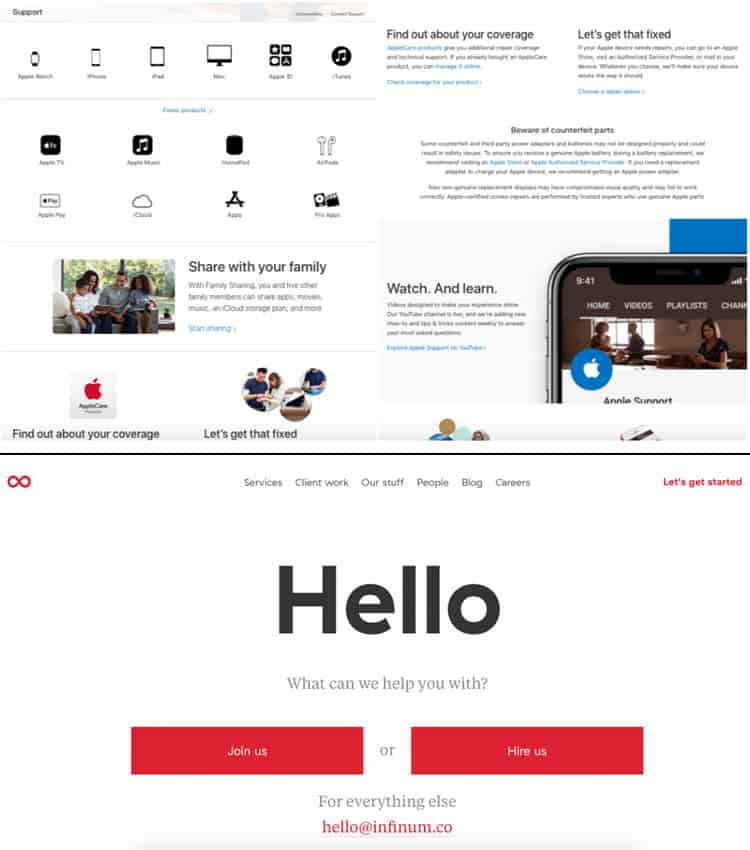
Having excellent customer service is a crucial part of trying to build and nurture lasting relationships with customers. Many companies focus on providing efficient communication channels in this regard while overlooking one critical aspect: psychology.
There are times when customers have experiences that are either beyond your control or leave with no other choice but to apologize and try to make amends. A sound understanding of psychological triggers can go a long way in enabling you to iron out those tricky situations and make good customer experiences even better.
Below is a discussion of 10 psychological triggers, the science behind them, and how you can leverage them to provide the best experiences for your customers through a live chat.
Self-Love
Apart from the constant yearning for instant gratification, live chat caters to another innate human trait: self-obsession. As noted by Customer Think, people are fixated on their own desires and ambitions. This self-love translates in a longing for other people to show interest in them. Moreover, when they get the attention they seek, it gives them a sense of being unique, relevant, and important.
When it comes to live chat, you can implement this in several different ways. Here are two of them:
- Call the customers by their name: If it sounds simple enough, it is because it is. Simply calling customers by their first name is an excellent start to making them feel that you care. According to Dale Carnegie, author of “How to Win Friends and Influence People,” “a man’s name to him is the sweetest and most important sound in the English language”.
- Ask questions: Similar to a date, asking questions is an excellent way to make people feel that you are focused on them. People like people who ask questions because it makes it about them. Also, in live chat, apart from making them feel special, asking questions will also allow you to find out what exactly it is they want, and, ultimately, resolve their issues.
Empathy
Empathy is one of the most basic elements of customer service.
When people feel that the person trying to address their issues understands what it feels like to encounter these issues, it builds trust that their concerns will be resolved.
While even a well-trained support agent’s voice can come off as disingenuous sometimes, that would not be a problem with live chat because unlike voice calls, your live chat support agents can always reassess the message before hitting ‘send’.
Love For “Now!”
Instant gratification is the backbone of live chat, and while people’s obsession with it may be attributed to smartphones, it has actually been around far longer than that. Instant gratification has been found to flood humans’ brains with the happy hormone, dopamine. Conversely, having to wait causes psychological discomfort, and in worst cases, anguish, which can sometimes register as physical pain.
Moreover, if having someone almost instantaneously respond to your query works wonders, imagine what will happen if you are actually able to help them.
The Path Of Least Resistance
In the same vein, this affinity for convenience has a necessary psychological foundation.
As noted by Psychology Today, people are wired to take the path of least resistance when given a choice. It is quite simple – if you want to know if they ship to your area, would you rather fill out an email contact form, or just chat with someone from customer support?
You can make your chat more visible and encourage visitors to start a conversation with you. For example, you can set up an automated greeting that triggers a chat with an invitation: “Hi, can I help you find the right product?”
Simplicity And Ease
A study by the University of Basel and Google found that it takes the human brain 1/35th of a second to judge a website’s aesthetic and functionality.
Part of that split second is processing whether something can be easily consumed and understood. This cognitive fluency (the measure of how easy it is to think about something) is something people are inclined towards.
Live chat provides it all – simplicity, ease of use and convenience.
Paradox Of Choice
Introduced by psychologist Barry Schwartz, the concept refers to the counterproductive nature of providing customers with too many options. This is why when Steve Jobs returned to Apple in 1997, he got rid of over 70 per cent of their products and focused on just four.
As noted by FreshDesk, when customers are faced with too many options, it can lead to anxiety, indecision, analysis paralysis, and dissatisfaction.
Take a look at these two help pages from Apple and Infinum:

Apple’s is just a bit too confusing, particularly when you wish to get hold of someone to figure out why your device is not working. Compared with Infinum’s, which one would you feel more at ease with?
When it comes to live chat, avoid offering multiple solutions and asking customers to make a choice. Not only you will avoid the paradox of choice, but you will also be able to get to a resolution more quickly.
Myth Of Motivation
This concept refers to the human tendency to wait to feel motivated before taking any action. Also called the motivation trap, it is your mind giving you an excuse to stay still, preventing you from reaching your full potential.
When it comes to live chat, this means not waiting for customers to come to you for help. Offer to assist them before they even come to you with an issue.
According to live chat software Comm100 founder and CEO Kevin Gao, a good way to implement this is by identifying pages that could use a higher conversion rate and test raising your chat widget to offer help automatically.
Gao suggests waiting until a visitor has spent between 30 and 60 seconds on a page before offering help. This way, you do not interrupt them before they even try to find what they are looking for.
Reciprocity And Fairness
One of the benefits of providing excellent customer service is that it plants seeds in their mind that will make them want to return the favour. As noted by Userlike, humans are hardwired to pay their debts, so if you give them something of value, they will feel obligated to reciprocate. It could be in the form of purchasing something or brand loyalty – the latter being invaluable to brands.
Zappos, for example, used to enhance their shipping strategy to overnight shipping without informing the customers. This creates a “wow” factor that would not be there had customers known all along that shipping was overnight. It can also be as simple as getting back to them with the info they need even before the time you promised it.
There are many ways to exhibit goodwill through live chat. Find out which works best and keep planting the seed of reciprocity in your customers.
Tap Their Minds
As pointed out by Acquire, whenever you teach, instruct, guide, give insights, or recommend a new idea or thought to your customers, their brain will jump into action. So when you educate your customers about the benefits of your product – how to use it, upgrade, downgrade (as opposed to its price), you are giving them a reason to think about your product.
Live chat is an excellent channel to educate your customers. If you can do it as part of resolving their issues, then that is a double win.
Psychology Of Design
Just as it is with your website, your live chat feature’s design also plays a part in the customer’s overall experience. You need to toe the line: available but not intrusive, proactive but not demanding, noticeable but not distracting.
From the colour scheme to font size and wording, there are several ways to design your live chat in a way that works for your brand.
Test What Works
What is important to note is that not every psychological trigger or sound approach will work for you. Each brand has its personality and different customers. Test what works with yours, and reap the many benefits of a successful live chat.
Want to learn more?
Want to get an industry-recognized Course Certificate in UX Design, Design Thinking, UI Design, or another related design topic? Online UX courses from the Interaction Design Foundation can provide you with industry-relevant skills to advance your UX career. For example, Design Thinking, Become a UX Designer from Scratch, Conducting Usability Testing or User Research – Methods and Best Practices are some of the most popular courses. Good luck on your learning journey!
(Lead image: rawpixel via Pexels)
